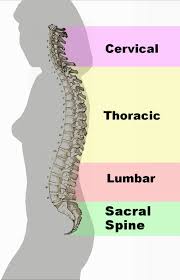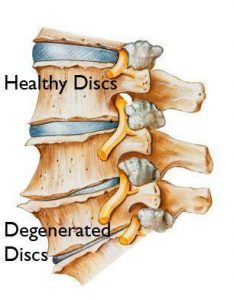
Degenerative Disc Disease
Degenerative disc disease is a misnomer. It is not scientifically a type of disease but rather a disorder resulting from the normal degradation of your spinal discs that come with aging (or lifestyle factors). Your spine is comprised of soft, compressible discs that separate your spinal vertebrae. These discs absorb shock applied to your spine allowing you to bend, twist or flex your back. As the discs degenerate, you will find that performing such motion can cause varying levels of pain depending on the state of your spinal discs. This type of disorder affects the neck and the lower back most.
Treatment & Management
Even though degenerative disc is not a problem for most people, it can cause severe and chronic pain to some. Degenerative disc disease treatment is therefore a must to manage the pain and prevent it from developing to other conditions like herniated disc or osteoarthritis. There are a variety of treatment approaches recommended for degenerative disc disease. The form of treatment is adjusted based on the extent of the issue and the pain suffered by the patient. Most cases require conservative and non-invasive approach to treating the problem. One example is to perform special exercises to strengthen the back muscles. These exercises include yoga, pilates, swimming and core strengthening activities. There are also instances wherein patients are required to wear a corset or brace to ensure proper lower back position. This will help to prevent causing more stress to your lower back and spinal discs.
Medical Therapy
Aside from the treatment options mentioned above, medical therapies are recommended for treating and managing degenerative disc disease. Your treatment options can include back school classes, prescribed exercises, physical modalities, injections and intake of certain types of medication.
Back Education & Back School
Back schools are designed to educate individuals about the importance of proper back pain management techniques. You will learn about the anatomy of your spine and the effect of misalignment. You will be taught the proper way to perform basic tasks such as sitting, getting out of bed, lifting weights, or pushing to avoid straining your spinal discs. With this knowledge, you will hopefully make lifestyle adjustments to prevent causing more stress to your lower back and putting your spinal discs at risk.
Exercise
As mentioned above, various exercises are prescribed to patients as part of degenerative disc disease treatment. The type of exercise is based on the diagnosis for each patient. Basic exercises such as low back stretches, hamstring stretches, extension exercises, abdominal bracing, and modified sit-ups help to relieve muscle tension and prevent further aggravation of lower back pain.
Medications
Medications do not really help to cure degenerative disc disease. However, they are given to patients to help manage pain. The medications recommended for those suffering from degenerative discs include anti-inflammatory, muscle relaxants and analgesics.
Physical Modalities
This type of treatment for degenerative disc disease functions like medications do. They are designed to help patients cope with the symptoms. Physical modalities treatment can include the use of ice packs, heating pads, and electrical stimulation, to name a few.
Injections


 I love to write medical education books. My books are written for everyone in an easy to read and understandable style.
I love to write medical education books. My books are written for everyone in an easy to read and understandable style.